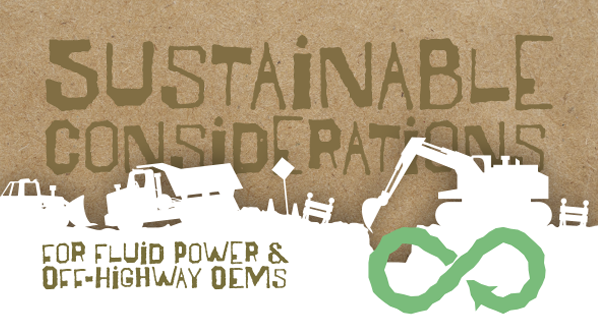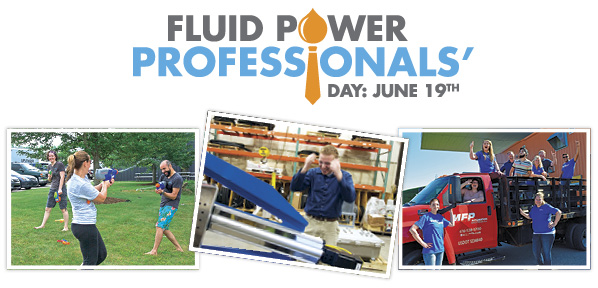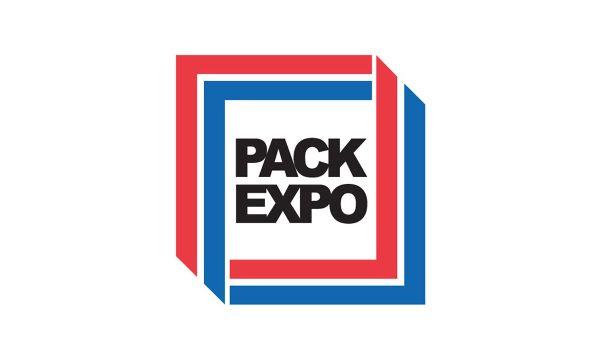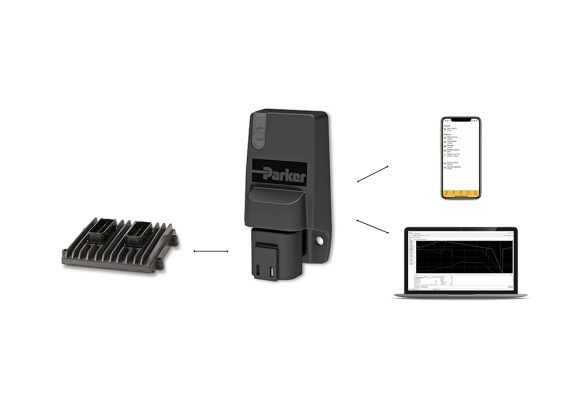Sustainable Considerations for Fluid Power & Off-Highway OEMs
By Matthias Keck, Director of Technology,
and Michael Cook, Global Segment Director, Fluid Power & Off-Highway
In today’s environmental and economic landscape, it is critical for fluid power and off-highway component manufacturers, as well as seal suppliers, to incorporate sustainability aspects into methods of production and packaging and explore innovations that contribute to efficiency. They need to focus on engineering simulations that increase the service life of seals and consider ways to recycle materials and components instead of scraping them. Doing “just enough” is no longer sufficient for customers and society. Component manufacturers need to align their sustainability efforts with manufacturing best practices for the future by taking an outside-in approach, guided by relevant UN Sustainability Development Goals, and incorporating circularity measures.
Production
One aspect of sustainability is the reduction of the total carbon footprint of a component’s production. To achieve this, component partners often consider the sustainability of materials. A safe and practical way to implement the use of lower-carbon materials is the mass balance approach.
Companies feed biomass, plastic waste, and fossil raw materials together in a chemical process and the output is one material made of mixed feedstock. The mass balance approach accounts for the flow of mass into and out of a system, as well as the accumulation or depletion of mass within the system. This allows for industrial processes to incrementally increase the proportion of sustainable material feedstock over time and therefore the proportion of products made from sustainable materials. Even though it may not be possible to use solely bio-sourced materials, the mass-balanced approach makes sustainable production accessible for fluid power and off-highway sealing solutions.
Component manufacturers should also look at contributing to material savings through advanced production techniques such as tooling capable of flashless molding leaving no excess material behind. Better tooling produces less scrap or parts that do not meet customers’ needs due in part to geometrical deviations or surface defects.
Scrap and material savings can also be achieved by simulating production processes before making a tool. Production experts can simulate how the material will flow in a mold and identify deformations in geometry. They can optimize the production process in theory and then apply the simulation results to tooling design and process parameters.
Packaging
When it comes to packaging, manufacturers like Trelleborg have transitioned from shipping products in white cardboard boxes – which require an additional bleaching process using chemicals and excess resources like water – to using traditional brown cardboard. Suppliers should investigate shipping products in packaging made from recycled or bio-based materials. Other options include utilizing reusable packaging wherever possible.
Application
Depending on the application, it may not always be feasible to use bio-based sealing products. Still, it’s important that original equipment manufacturers (OEMs) acknowledge if their suppliers contribute to sustainable applications or not. For example, it is impractical to make the sealing elements for hydraulic pitch cylinders in wind turbines using biobased products. However, wind energy is a sustainable and alternative energy source and high-performance sealing non-biobased systems allow for reliable operation under demanding conditions and long service life.
Energy Efficiency
Some component suppliers emphasize innovations that have low-friction characteristics and therefore contribute to energy efficiency and sustainability. For example, Trelleborg’s Turcon® Roto L seal extends seal life on axles with central tire inflation systems by only sealing when required. This reduces friction and lowers fuel consumption, thereby conserving energy.
The Turcon® Roto L seal’s patented design combines a Turcon® M12 polytetrafluoroethylene (PTFE) based sealing lip with a rubber jacket and a stable shape-forming metal part. During phases of constant tire pressure, the sealing lip holds lightly against the sealing surface for zero friction performance and only activates during a change of tire pressure. This sealing concept minimizes wear, resulting in a significant extension of seal life – up to four times longer than traditional seals.
Service Life
To make better-quality seals that contribute to sustainability, component manufacturers need to know the real load cycle of an application. Oftentimes, OEMs know and share peak operating conditions – maximum pressure, speed, velocity, and temperature extremes. Seals are engineered to withstand these peak conditions but if seal manufacturers know the real load cycle of an application, they can make better recommendations on materials and sealing products.
Finite element analysis simulations can also help predict a seal’s function over time and required maintenance intervals. A seal’s life can be calculated for decades in a matter of hours. This information enables component manufacturers to design a seal with optimized characteristics and provide fluid power OEMs guidance on how to meet specifications that will maximize the life of the seals and equipment. Being able to predict a seal’s lifetime offers a huge return on investment for OEMs since it allows for planned maintenance rather than costly unplanned line stops or in-field stoppages.
Thinking Circular
Seal suppliers and OEMs should consider the circular economy in the design phase of their products, materials, and solutions, instead of using the traditional linear economy approach to manufacturing. Rather than using raw material to make a component that is scrapped at the end of its life, why not utilize an option better suited for the environment and your business? Creating circular products that last longer and use less energy, can be repaired, refurbished, or recycled, and have a useful second life, supports sustainability.
Conclusion
Some sustainability improvements for fluid power component manufacturing are straightforward whereas others are more indirect but often no less valuable. A sealing partner focused on how to reduce its carbon footprint in the areas of production, packaging, applications, energy efficiency, service life, and recycling can help OEMs reach their sustainability goals.








